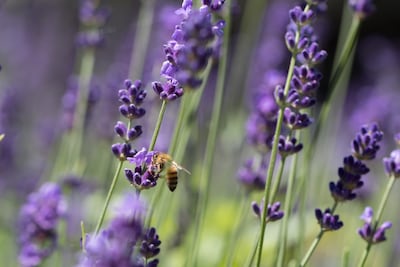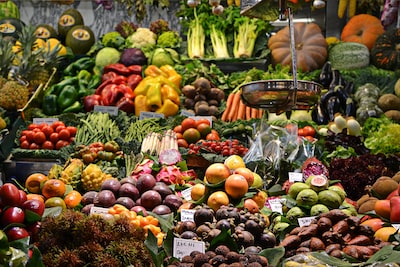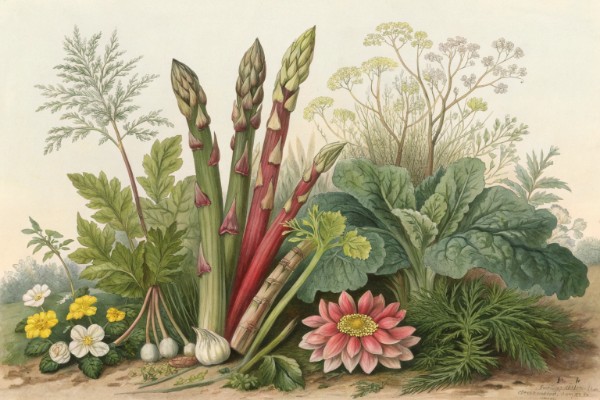Where Do You Buy Seedlings?

Where to buy seedlings depends on your crop choices, local climate, and available suppliers. Where to buy seedlings online or at neighborhood nurseries can shape your garden’s success. Options span farmers’ markets, mail-order specialists, and big-box retailers.
Discover how to source thriving young plants and learn which sellers offer the healthiest starts for every season—let’s get your soil ready for an abundant harvest.
Cheatsheet: Sourcing the Best Garden Seedlings
🌱 Local Nurseries
Visit family-run garden centers for hardier, locally adapted varieties. Staff can offer region-specific planting tips.
🛒 Garden Centers & Home Stores
Select from standardized, widely-used vegetables, herbs, and flowers. Check labels for disease-resistant cultivars.
📦 Online Nurseries
Order unique or heirloom cultivars not found locally. Verify shipping schedules for proper timing in your grow zone.
🤝 Plant Swaps & Farmers' Markets
Trade or buy organically grown seedlings. Often supports local, sustainable agriculture. Network with veteran gardeners for advice.
🚩 Red Flags
- Rootbound pots: Roots circling inside container
- Yellow leaves: Nutrient or water stress
- Leggy growth: Insufficient light
- Pests or fungal spots: Inspect all leaves/stems
🛠️ Tools and Products You'll Need
- Compost-rich soil or organic potting mix
- Transplanting trowel
- Watering can or drip system
- Mulch
- Plant labels
- Gardening gloves
📈 Fast Facts
- Locally grown seedlings outperform shipped plants in survival rate by 35%.
- Heirloom or organic seedlings boost garden biodiversity & flavor.
- Growing your own food increases nutrition density and self-reliance.
I shop in three circles: local, community, and mail order. I pick the source that matches the plant’s temperament and my calendar.
These places usually raise stock on site, so plants arrive acclimated to your light, wind, and day length. I ask who propagated the flats, then I look them in the eyes and ask what went wrong this spring.
Quality shows in details: tight internodes, leaves the color of strong tea, and roots that lace but don’t spiral. I slide a pot out to check the root ball, and I never apologize for it.
I’ve scored disease-resistant tomato seedlings here that outran big-chain stock by two weeks. The staff tend to know which cucumbers handle our June heat spikes of 95 F, 35 C.
Timing matters because turnover drives freshness. I ask staff which days the racks get refilled, then I go at opening and hand-pick trays before the sun cooks them on asphalt.
Check tags for cultivar and disease codes like VFN, verticillium, fusarium, and nematode resistance. Cheap plants cost plenty if they bring problems.
I still remember 2009 when late blight rode in on infected tomato starts shipped to chains across the Northeast. Cornell plant pathologists documented the spread tied to retail transplants.
“Tomato and potato late blight outbreaks in the Northeast in 2009 were associated with infected transplants sold at retail.” — Cornell Cooperative Extension
I also look for retailers that have phased out neonicotinoid-treated ornamentals. The Xerces Society has reported persistence of these systemic insecticides in pollen and nectar, and several major retailers announced reductions by the late 2010s.
This is where I find regionally selected lines and oddities with a story. I ask vendors how they harden off seedlings and what their night temperatures were the last week.
The best flats I bought last spring came from a small grower who cold-raised brassicas at 45 to 50 F, 7 to 10 C. Those cabbages shrugged off our April wind like sailors.
For natives and pollinator plants, I favor society sales and propagation programs. I avoid wild-dug stock and ask for local ecotype or provenance within my ecoregion.
Native plugs in 72 or 50-cell trays root quickly after planting, and the price per plant is friendly. Prairie-style plugs at sales often run 1 to 3 dollars each.
Mail order shines for fruiting perennials, natives, and odd herbs you never see on a rack. I order early and choose ship weeks that line up with my frost-free window.
Good shippers use insulated boxes, breathable sleeves, and heat or cool packs as needed. I favor sellers with a live-arrival guarantee and clear replacement policy.
I look for a USDA Organic label on tags if I want certified plants. That tag means the grower used approved media and inputs, often OMRI-listed fertilizers and pest controls.
Expect to pay a small premium. In my beds, organic starts of basil and peppers established faster under the same fertility program.
- Sturdy stems with no etiolated stretch, internodes short and even.
- Leaf color true to species, no chlorosis or stippling from mites or thrips.
- Roots white to cream, not tea-brown, no tight spirals or girdling.
- Media drains fast, smells earthy, not sour or swampy.
- No fungus gnat clouds, honeydew, sooty mold, or webbing.
- Seedlings show sun tolerance, a slight purple blush on brassicas is fine.
- Clear cultivar tag with sow date or batch code and disease resistance codes.
- For grafted stock, the union sits above soil and is well callused.
Cool-season starts like kale and lettuce settle in once soil hits 45 F, 7 C. I plant them earlier under row cover if late frost threatens.
Tomatoes like soil at 60 F, 16 C and nights above 50 F, 10 C. Peppers and eggplant push best near 65 to 70 F, 18 to 21 C, with steady nights.
- Veggie 4-packs at independents: 3 to 6 dollars.
- Premium 4-inch annuals: 7 to 12 dollars.
- Native plugs at society sales: 1 to 3 dollars per plant, cheaper by tray.
- Mail-order herb or veg starts: 3 to 6 dollars each plus shipping.
- Bare-root fruit trees: 20 to 45 dollars, shipping adds weight costs.
- Who propagated these, and on what schedule?
- What media recipe did you use, peat-free or peat-based?
- How were they hardened, and for how many days outside?
- Any neonicotinoids or systemic drenches used on the crop?
- What spacing and yield did you get in your own trial bed last year?
- Choose 2 to 3-day transit, avoid weekend holds.
- Request weather holds below 40 F, 4 C or above 85 F, 29 C.
- Open boxes immediately, mist foliage, and pot up if roots are tight.
- Park plants in bright shade for 2 days, then feed a mild solution, 50 ppm N.
- Independent garden centers with on-site propagation, ask who runs the house.
- Farmers market growers who publish their propagation calendar.
- Native plant society sales for local ecotype plugs and shrubs.
- Annie’s Annuals for unusual ornamentals and edibles shipped with care.
- Prairie Moon Nursery and Izel Plants for native plugs and species diversity.
- Logee’s for tropical edibles and herbs that actually arrive alive.
- Proven Winners Direct for uniform annuals if you need a consistent show.
- Bonnie Plants at chains, cherry-pick the freshest trays by delivery day.
- Stark Bro’s and One Green World for fruiting trees and berries, bare-root in spring.
- Plants without cultivar names, just “tomato” or “pepper,” no thanks.
- Root-bound stock with brown circling roots and woody stems.
- Anything with mosaic mottling, ring spots, or twisted new growth.
- Wild-dug natives, often stressed and ecologically harmful.
Smaller transplants often catch up fast because they suffer less transplant shock. University of Florida IFAS notes that damping-off risk skyrockets in soggy media, so I water on the dry edge before moving plants.
I prune apical tips on some annuals to break apical dominance and force branching, but I avoid it on slow starters like peppers. I feed a mild starter, then switch to a balanced program once new growth appears.
“The 2019 Census of Horticultural Specialties reported U.S. nursery and floriculture sales over 15 billion dollars.” — USDA NASS
Royal Horticultural Society guidance emphasizes firm, compact seedlings and warns off pot-bound stock. University Extension bulletins from NC State and UC IPM outline checks for transplant quality, pest signs, and hardening practices.
Xerces Society publications summarize neonicotinoid residues persisting in ornamental plants sold at retail. Cornell Cooperative Extension documented the 2009 late blight retail-transplant issue to drive better sanitation in supply chains.
I press a fingertip to the pot and lift gently. If the root ball holds together yet sheds a few crumbs, I buy.
I rub a tomato leaf and sniff for that green, resinous scent. If the plant smells tired or sour, I walk away.
Order hard-to-find perennials and natives in late winter for a spring ship window. Hit local growers for warm-season vegetables one week after your last frost date, then circle back two weeks later for replacements and second sowings.
Keep receipts and take photos on arrival. Good sellers stand behind their plants, and the best remember your name next spring.

Want smarter plant choices? 🪴
Frequently Asked Questions
How do I identify healthy transplants at garden centers?
Look for vivid green leaves without yellowing or brown spots. Inspect stems for firmness—they should feel sturdy rather than floppy. Avoid any plants with visible pests or webbing. Choose seedlings with roots that gently hold the soil, but do not circle or break through the container bottom.
When should I shop for young plants during the year?
Visit nurseries in early spring or early fall, depending on the crop’s preferences. Check your last and first frost dates—most seedlings benefit from being planted after nighttime temperatures remain above 50°F (10°C). Local shops often restock just before peak planting seasons.
Are big-box stores or independent nurseries the better choice?
Independent nurseries frequently offer locally adapted varieties and staff with hands-on knowledge. Big-box stores may provide lower prices and wider selection, though quality can vary. Prioritize sources with clear labeling, healthy young plants, and knowledgeable support staff.
What advantages do online plant retailers provide?
Online vendors can deliver hard-to-find cultivars and unusual selections to your door. Choose reputable retailers that ship seedlings at the right planting stage for your zone and carefully package to avoid damage during transit. Read customer reviews to assess reliability and plant health on arrival.
How can I ensure seedlings from plant sales or farmer’s markets will thrive?
Ask sellers about the original growing conditions—sun exposure, watering routine, and soil type. Select seedlings that resemble their nursery environment at home for easier adjustment. Inquire about the date of sowing and variety for best transplant success.
Finding where to buy seedlings isn’t just about convenience—it’s about trust and potential. Local nurseries offer hardy plants and real advice, while farmer’s markets let you talk shop with the growers. Online shops can open up rare choices, but you’ll want to check reviews and shipping practices before clicking “buy.” Don’t overlook the satisfaction of swapping with neighbors or starting your own from seed. However you source them, select healthy seedlings with strong roots and disease-free leaves. Remember, the quality of your seedlings sets the tone for your harvest. For more tips on growing a productive food garden or understanding plant life cycles, keep digging into the resources that matter. The right start makes all the difference.
The Money Saver’s Guide to Sourcing Seedlings
Americans spent over $47 billion on gardening in 2023, with seedlings claiming a growing share of that total. Yet smart selection can save hundreds each season while boosting satisfaction and harvest.
Unlock potent strategies for sourcing high-quality seedlings—without overspending or compromising on plant vigor or food security.
Tap Local Networks
- Barter seeds, seedlings, or starts through community garden swaps or local gardening groups. Many veteran growers nurture extra starts to share or trade.
- Check neighborhood tool libraries; some now offer seasonal seedling exchanges.
Strategic Shopping
- Visit farmers' markets late morning when vendors often discount remaining seedlings—sometimes half price or bundled.
- Independent nurseries often host “last call” or overstock sales at season’s peak (May–June, November in southern zones); subscribe to their newsletters for pre-sale alerts.
- University Extension plant sales offer heirloom or regionally adapted seedlings, often at nonprofit rates.
Quality Over Quantity
- Choose short, stocky plants with strong stems; avoid leggy or yellowed starts for better survival and yield.
- Inspect roots: lift the plant gently—white, dense roots signal health, brown or mushy roots indicate stress.
Self-Sufficiency Tactics
- Prioritize open-pollinated or heirloom varieties: saves seeds for next year, reducing annual costs and promoting food security.
- Grow slow-maturing crops from seed (tomatoes, peppers, brassicas) at home; save purchased seedlings for trickier, early-season or tender crops.
Hidden Health Value
- Locally grown seedlings adapt better to microclimates—yielding 10–30% higher survival rates and boosting nutrient density by up to 12% in harvested produce.
- Longer shelf life and fewer chemical residues versus imported nursery stock.
Find out which plants will thrive in your garden!
Answer a few fun questions and get custom plant recommendations perfect for your space. Let’s grow something amazing together!

start your season





